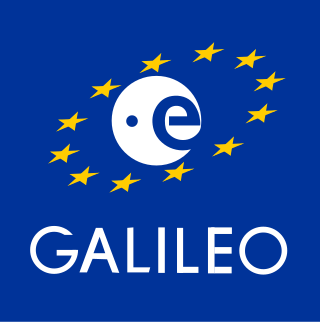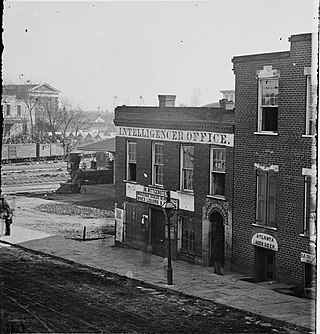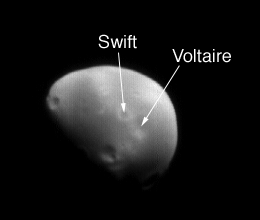
Galileo is a global navigation satellite system (GNSS) that went live in 2016, created by the European Union through the European Space Agency (ESA), operated by the European Union Agency for the Space Programme (EUSPA), headquartered in Prague, Czech Republic, with two ground operations centres in Fucino, Italy, and Oberpfaffenhofen, Germany. The €10 billion project is named after the Italian astronomer Galileo Galilei. One of the aims of Galileo is to provide an independent high-precision positioning system so European political and military authorities do not have to rely on the US GPS, or the Russian GLONASS systems, which could be disabled or degraded by their operators at any time. The use of basic (lower-precision) Galileo services is free and open to everyone. A fully encrypted higher-precision service is available for free to government-authorized users. Galileo is intended to provide horizontal and vertical position measurements within 1 m precision. Galileo is also to provide a new global search and rescue (SAR) function as part of the MEOSAR system.

Amalthea is a moon of Jupiter. It has the third closest orbit around Jupiter among known moons and was the fifth moon of Jupiter to be discovered, so it is also known as Jupiter V. It is also the fifth largest moon of Jupiter, after the four Galilean Moons. Edward Emerson Barnard discovered the moon on 9 September 1892 and named it after Amalthea of Greek mythology. It was the last natural satellite to be discovered by direct visual observation; all later moons were discovered by photographic or digital imaging.

Thebe, also known as Jupiter XIV, is the fourth of Jupiter's moons by distance from the planet. It was discovered by Stephen P. Synnott in images from the Voyager 1 space probe taken on March 5, 1979, while making its flyby of Jupiter. In 1983, it was officially named after the mythological nymph Thebe.

A satellite navigation or satnav system is a system that uses satellites to provide autonomous geopositioning. A satellite navigation system with global coverage is termed global navigation satellite system (GNSS). As of 2023, four global systems are operational: the United States' Global Positioning System (GPS), Russia's Global Navigation Satellite System (GLONASS), China's BeiDou Navigation Satellite System, and the European Union's Galileo.
Awards and decorations of the United States government are civilian awards of the U.S. federal government which are typically issued for sustained meritorious service, in a civilian capacity, while serving in the U.S. federal government. Certain U.S. government awards may also be issued to military personnel of the United States Armed Forces and be worn in conjunction with awards and decorations of the United States military. In order of precedence, those U.S. non-military awards and decorations authorized for wear are worn after U.S. military personal decorations and unit awards and before U.S. military campaign and service awards.
Georgia Library Learning Online, more commonly known as GALILEO, is a virtual library operated by the University System of Georgia. There are over 100 core databases available, offering full text access to journals, magazines, e-books, government information, primary documents, and more. The Digital Library of Georgia is also part of the GALILEO system.

The Intelligencer was a weekly, and later daily newspaper first published in Atlanta on June 1, 1849 as The Weekly Intelligencer. The founders were Benjamin Bomar, Zachariah A. Rice, Jonathan Norcross and Ira O. McDaniel. During the American Civil War, the newspaper had great trouble acquiring paper from its supplier, the paper mill at Sope Creek.
The Digital Library of Georgia (DLG) is an online, public collection of documents and media about the history and culture of the state of Georgia, United States. The collection includes more than a million digitized objects from more than 200 Georgia-related collections. The DLG connects users to content from 65 libraries, archives, museums, historical societies, and other institutions, as well as 100 agencies of state government. It can be searched or browsed through the Digital Library of Georgia website.

Swift crater is a crater on Mars's moon Deimos. It is about 3 km (1.9 mi) in diameter. Swift crater is named after Jonathan Swift, whose 1726 book Gulliver's Travels predicted the existence of two moons of Mars. Swift crater is one of two named features on Deimos, the other being Voltaire crater. On 10 July 2006, Mars Global Surveyor took an image of Deimos from 22,985 km (14,282 mi) away showing Swift crater.
The Department of Defense Distinguished Civilian Service Award is the highest civilian award given by the United States Department of Defense. This award and accompanying Distinguished Civilian Service Medal is the department's highest award given to career DoD civilian employees whose careers reflect exceptional devotion to duty and whose contributions to the efficiency, economy, or other improvements in DoD operations are of a significantly broad scope

Galileo Regio is a large, dark surface feature on Jupiter's moon Ganymede.

Galileo is a 1975 biographical film about the 16th- and 17th-century scientist Galileo Galilei, whose astronomical observations with the newly invented telescope led to a profound conflict with the Roman Catholic Church. The film is an adaptation of Bertolt Brecht's 1943 play of the same name. The film was produced by Ely Landau for the American Film Theatre, which presented thirteen film adaptations of plays in the United States from 1973 to 1975. Brecht's play was recently called a "masterpiece" by veteran theater critic Michael Billington, as Martin Esslin had in 1960. The film's director, Joseph Losey, had also directed the first performances of the play in 1947 in the US — with Brecht's active participation. The film is fairly true to those first performances, and is thus of historical significance as well.

Memphis Facula is a palimpsest, or "ghost crater", on Ganymede, the largest of the Jovian satellites.

Masubi is an active volcano on Jupiter's moon Io. It is located on Io's leading hemisphere at 49.6°S 56.18°W
Joseph Everhart Boone was an American civil rights activist and organizer who marched together with Martin Luther King Jr.

Rajpal Singh Sirohi is an Indian optics physicist, academic administrator, educator, and researcher in optical metrology. He is the former Director of IIT Delhi and Vice Chancellor of several universities. He is the Fellow of INAE, NASI, OSA, SPIE, OSI and ISoI. He has received numerous awards including Gabor Award of SPIE, Galileo Award of ICO. He is also the recipient of Padma Shri by Govt. of India. He is the author of about 430 papers and several books.

Laurence A. Soderblom is a geophysicist with the Astrogeology Science center at the United States Geological Survey in Flagstaff, Arizona where he has served as Chief of the Branch of Astrogeology. Soderblom is best known for his work in imaging science.
The Walker County Messenger is a weekly broadsheet newspaper published in LaFayette, Georgia, distributed throughout the greater Walker county area of northwest Georgia. It was the first newspaper to be published in LaFayette, Walker County, and was recently purchased by Times-Journal Inc., a Marietta, Georgia-based company which owns over five Georgia newspapers. The current president and editor of the newspaper is Don Stilwell.

The 1990 Georgia lieutenant gubernatorial election was held on November 6, 1990, to elect the lieutenant governor of Georgia, concurrently with the 1990 gubernatorial election, as well as elections to the United States Senate and elections to the United States House of Representatives and various state and local elections. Georgia is one of 21 states that elects its lieutenant governor separately from its governor.












